#Hutus
Text
7 avril : la mémoire du génocide tutsi au Rwanda
Il y a 30 ans, jour pour jour, commençait un génocide qui allait faire disparaître, en trois mois, un million de personnes dans un pays de moins de 7 millions d’habitants, le Rwanda.
Tutsi et de Hutu sont des appartenances fixées par le colonisateur belge. À l’époque coloniale, les Européens ont voulu catégoriser les populations soumises en ethnies bien identifiables. Dans le cas du Rwanda, cette construction était très largement artificielle, car Tutsis et Hutus habitent le même territoire, partagent la même langue et ont adopté la même religion, le catholicisme. L’ethnie figurait sur les cartes d’identité, c’est ce qui facilita les massacres, car comment identifier à coup sûr les individus à éliminer ?
En 1962, le colonisateur belge avait laissé le pouvoir à un mouvement radical Hutu, aussitôt des massacres se sont produits. En 1973, quand Juvénal Habyarimana prend le pouvoir à la suite d’un coup d’État, les Tutsis ne sont plus désormais que des citoyens de seconde zone ce qui engendrera la création du FPR (Front patriotique rwandais) pour combattre le dictateur. Ce mouvement rebelle, implanté dans les pays voisins, est composé de Tutsis et de Hutus modérés qui ont fui leur pays. Le dictateur Juvénal Habyarimana fini par accepter un partage du pouvoir (accord d’Arusha, en août 1993) mais en même temps le pouvoir de Kigali laissait se développer une propagande anti-tutsi aux accents meurtriers. La radio Mille collines qui appelle quotidiennement à éliminer tous les Tutsis du pays est fondée en juillet 1993. Par ses discours de haine, elle joua un grand rôle pendant le génocide. Le 6 avril 1994, l’avion présidentiel est abattu par un missile, on n’a jamais su qui avait tué Juvénal Habyarimana, mais la propagande hutue désigne aussitôt les Tutsis. Le 7 avril 1994, commence des massacres qui ne s’achèveront que le 17 juillet par la prise de contrôle du pays par le FPR et la fuite des extrémistes Hutus au Zaïre (aujourd’hui RDC).
Depuis, le FPR a pris le pouvoir, son leader Paul Kagamé est président de la république. Il appartient à une famille de Tutsis qui s’était réfugiée en Ouganda, bien avant le génocide. Son régime est autoritaire, mais le pays a retrouvé la paix et a prospéré sous son règne.
Le régime organise tous les ans, le 7 avril, une commémoration du génocide mais sans pour autant avoir cherché à identifier les coupables et les victimes. La mention de l’ethnie sur les cartes d’identité a été enlevée dès août 1994, aujourd’hui il n’y a officiellement plus de Hutus ni de Tutsis, rien que des Rwandais. Néanmoins, la cohabitation entre victimes et bourreaux pose de grandes difficultés à la reconstruction du pays. Dans un souci de réconciliation nationale, les victimes ont été enjointes de pardonner à des bourreaux qui ont rapidement débité un texte de contrition. Un lourd silence pèse sur le génocide qui est commémorés aujourd’hui. Le pays a mis beaucoup de temps à le faire entrer dans les manuels d’Histoire. C’est fait à présent mais que ce n’est plus qu’un fait historique pour une très large partie de la population. Le Rwanda est un pays très jeune : 70% de la population a moins de 30 ans et n’a pas vécu le génocide.
De commémorations en commémorations, les choses évoluent à l’international. En 2021, le président Macron, mettait un terme au déni de la France et admettait des responsabilités dans le déroulement du génocide du fait d’un soutien coupable à la dicature extrémiste hutue. En 2024, pour ce 30e anniversaire, le président français affirme que la France, « avec ses alliés occidentaux et africains » aurait ou arrêter le génocide mais n’en a pas eu, à l’époque, la volonté. Il rappelle que, « quand la phase d'extermination totale contre les Tutsis a commencé, la communauté internationale avait les moyens de savoir et d'agir, par sa connaissance des génocides que nous avaient révélée les survivants des Arméniens et de la Shoah ». Le Vatican, en revanche n’a jamais fait le moindre commentaire sur l’aveuglement de l’Église face à ce génocide.
En l’an 2000, le Premier ministre belge, Guy Verhofstadt, avait été beaucoup plus clair : « J’assume ici devant vous la responsabilité de mon pays, des autorités politiques et militaires belges, et au nom de mon pays, je vous demande pardon pour cela. » La même année, le secrétaire général de l’ONU, Kofi Annan, avait juste exprimé des remords : « Au nom de l’ONU, je reconnais cet échec et j’exprime mon profond remords. » En 2003, l’ONU institue le 7 avril comme la Journée internationale de réflexion sur le génocide au Rwanda qui deviendra, en 2018, la Journée internationale de réflexion sur le génocide des Tutsis au Rwanda en 1994. Chaque année, à cette date ou aux alentours de cette date, l’Organisation des Nations Unies organise des manifestations commémoratives à son siège, à New York, et dans ses bureaux dans le monde entier.
Le Rwanda a deux jours fériés pour commémorer le génocide. La période de deuil national débute avec Kwibuka (“se souvenir”, en kinyarwandais), la commémoration nationale du 7 avril et se termine avec le Jour de la libération, le 4 juillet.
Un article de l'Almanach international des éditions BiblioMonde, 6 avril 2024
0 notes
Text
1994 Rwandan Genocide
1994 Rwandan Genocide was caused by multiple factors, which include the rise of its population, lack of food supply, lack of prospects for men
The Rwanda genocide, which took place in 1994, was caused by multiple factors, which include the rise of its population, lack of food supply, lack of prospects for men aged in their 20s and the lack of land available for young men to start families.
This led to this genocide for multiple reasons, not just the ethnic tensions between the Hutus, who made up 85% of the population, and the minority…

View On WordPress
0 notes
Text
Que fait réellement Paul Kagame en République démocratique du Congo ?
Que fait réellement Paul Kagame en République démocratique du Congo ?
Le nombre d’officiers supérieurs d’origine Tutsi dans l’armée congolaise dépasse celui de toutes les autres tribus réunies du Nord et Sud Kivu. Comment expliquer que cette communauté soit en danger dans les deux (2) Kivu ?
Une chose est vrai le Rwanda se sert de cette communauté installée dans l’Est de la RDC depuis bien longtemps pour justifier la déstabilisation lui permettant ainsi de piller…

View On WordPress
0 notes
Text
whatever you do, DON'T listen to "The Underworld" from epic the musical and think of Leo Valdez finding out about Jason's death right as Odysseus sings "...I took too long."
#THEY MIISEDEACHOTHER BY A FEW DAYS HUTU UPOP J#ODYSSEUS WHEN YOU COME HOME I'LL BE WAITING EVEN IF YOU'RE THE LAST THING I SEE#I'LL BE WAITING#😭😭😭😭😭#the underworld saga#jorge rivera herrans#epic the musical#valgrace#heroes of olympus#leo valdez#jason grace
232 notes
·
View notes
Text
youtube
Rwanda: From colonialism to genocide
(Matthias Frickel | 04/02/2024)
The DW documentary "Reclaiming History — Colonialism and the Genocide in Rwanda" traces the arc from German colonial rule to the genocide in Rwanda.

Ishimwe interviewed surviving members of his family for the documentary. Image: Matthias Frickel/DW
The DW documentary "Reclaiming History — Colonialism and the Genocide in Rwanda" is the first to examine the role played by German and Belgian colonialism in the 1994 genocide against the Tutsi in Rwanda. Rwandan director Samuel Ishimwe, whose parents were murdered in the genocide, sets out in search of the origins of the "racial hatred" between Tutsi and Hutu. The 86-minute documentary will be broadcast on DW's worldwide linear program and available for streaming on DW Documentaries' YouTube channels starting April 5, 2024.
Sowing the seeds of hatred
"If we speak the same language, share the same culture, same country, how did we become different?" It is this fundamental question that drives Samuel Ishimwe, filmmaker from Rwanda and winner of a Silver Bear at the 2018 Berlin International Film Festival. How was hatred sown in Rwanda? By whom? In 100 days from April 1994, some one million people were brutally murdered, including Ishimwe's parents and most of his family.

Filmmaker Samual Ishimwe's family, before the 1994 genocide killed all but two of them. Image: Samuel Ishimwe/DW
The fact that he is now investigating the question of "why" on behalf of a German broadcaster is particularly significant for him. Scientific findings show that Germany, as the first colonial power, had already divided Rwandans into different "races” at the end of the 19th century. Were the seeds for the later killings sown here? In the 1994 genocide against the Tutsi, Hutu militias killed their neighbors because they believed propaganda that the Tutsi minority were not human.
Tracing history in Rwanda, Germany and Belgium
DW director Matthias Frickel accompanies Samuel Ishimwe on his journey through Rwanda, Germany and Belgium, where historians and contemporary witnesses help him get to the bottom of both his story and that of his country. For example, Romeo Dallaire, former head of the United Nations blue helmet force in Rwanda, relates how he had to watch the Western world allow the killings to take place in 1994, despite his tireless warnings.
[Keep reading]
#Rwanda#genocide#1994#1990s#Germany#Belgium#colonialism#German history#Belgian history#dehumanization#Hutu#Tutsi minority#Samuel Ishimwe#Matthias Frickel#Youtube
8 notes
·
View notes
Text

Barringtonia asiatica: est un arbre et appartenant à la famille des Lecythidaceae. Il est également appelé Badamier de l'Inde, Bonnet carré, Bonnet de prêtre ou Bonnet d'évêque. En Polynésie, cet arbre se nomme Hutu
Source: wikipédia
#barringtonia asiatica#badamier#pretre#hutu#inde#polynesie#arbre#lecythidaceae#botanique#flore#arboriculture#juin 2023#les-portes-du-sud#@kamel
13 notes
·
View notes
Text

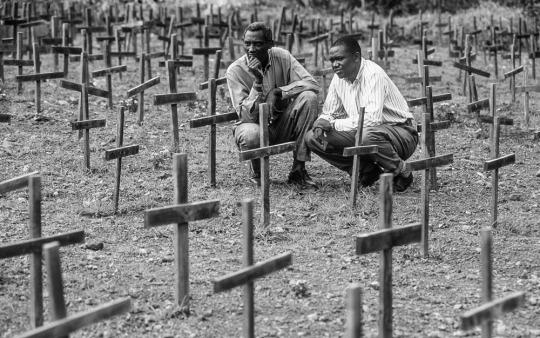
Rwandan genocide
The 1994 Rwandan genocide was another disappointing case of how toxic tribalism can lead to death of many citizens by the hand of their fellow countrymen. During this genocide the Hutu tribe massacred people from the Tutsi tribe and in just 100 days about 800,00 people were slaughtered.
Lists of government opponents were handed out to militias who went and killed them, along with all of their families. Neighbors killed neighbors and some husbands even killed their Tutsi wives. Thousands of Tutsi women were also taken away and kept as sex slaves. Tutsi citizens were quite literally butchered as many were murdered by the "weapon of choice" which was a machete.
The western world had turned there back on the Tutsi as the UN and Belgium had forces in Rwanda but the UN mission was not given a mandate to stop the killing. A year after US troops were killed in Somalia, the US was determined not to get involved in another African conflict. The Belgians and most UN peacekeepers pulled out after 10 Belgian soldiers were killed. The French, who were allies of the Hutu government, sent a special force to evacuate their citizens and later set up a supposedly safe zone but were accused of not doing enough to stop the slaughter in that area.
The story of the Rwandan genocide was perfectly depicted in the movie (Hotel Rwanda-2004).
•••
Genocidio de Ruanda
El genocidio de Ruanda de el año 1994, fue otro caso decepcionante de como el tribalismo tóxico puede llevar a la muerte de muchos ciudadanos a manos de sus compatriotas. Durante este genocidio, la tribu Hutu masacró a las personas de la tribu Tutsi y en tan solo cien días, alrededor de ochocientas mil personas fueron masacradas.
A las milicias se les entregaron listas de los opositores del gobierno, fueron y los mataron junto con todos sus familiares. Habían vecinos que mataban a sus vecinos, y algunos esposos mataban a sus esposas Tutsi. Miles de mujeres Tutsi fueron secuestradas y las mantenían como esclavas sexuales. Los Tutsi fueron masacrados, muchos fueron asesinados con un “arma de preferencia”, la cual era un machete.
El mundo occidental le había dado la espalda a los Tutsi, ya que la ONU y Bélgica tenían tropas en Ruanda, pero la misión de la ONU no recibió mandato para detener las matanzas. Un año después de que las tropas estadunidenses murieran en Somalia, Estados Unidos estaba decidido a no involucrarse en otro conflicto africano. Los belgas y la mayoría de los conciliadores de la ONU se retiraron después de la muerte de diez soldados belgas. Los franceses que eran aliados del gobierno Hutu, enviaron a una fuerza especial para evacuar a sus ciudadanos y luego establecieron una zona “supuestamente segura”, pero fueron acusados de no hacer lo suficiente para detener las matanzas en la zona.
La historia del genocidio de Ruanda quedó perfectamente representada en la película (Hotel Ruanda-2004).
#blacklivesmatter#blacklivesalwaysmatter#history#blackhistory#culture#blackhistorymonth#knowyourhistory#rwanda#genocide#dontforget#follow#read#share#reblog#blackpeoplematter#tutsi#hutu#tribes#english#spanish#learn#newpost#africa#like#short reads#black children matter#black women matter#historyfacts#blackmenmatter
23 notes
·
View notes
Text
Welcome Back Paul Rusesabagina!
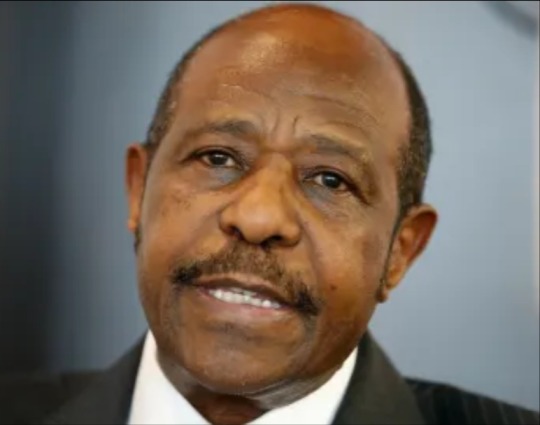
The world needs its heroes.
3 notes
·
View notes
Photo
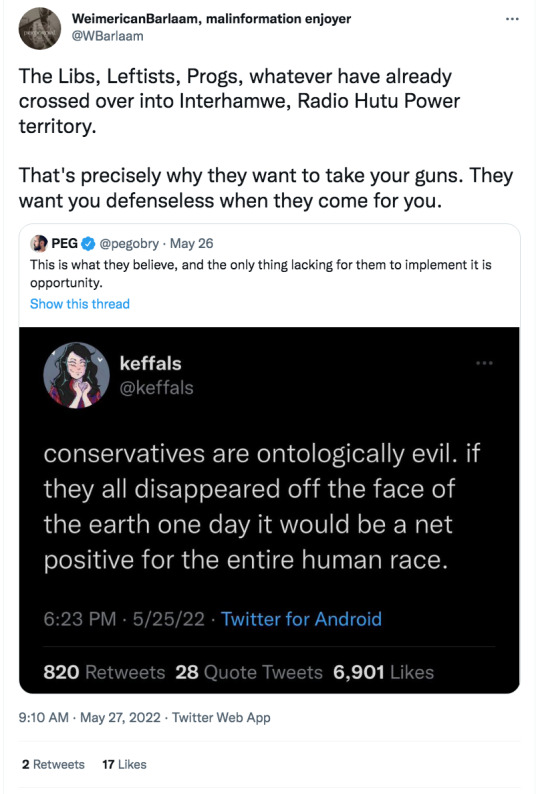
(link)
[@mitigatedchaos]
2 notes
·
View notes
Text
5 février : la journée de l’unité nationale au Burundi
Le 5 février est un jour férié au Burundi, en mémoire de la charte de l’unité nationale signée le 5 février 1991. La Journée de l'Unité a été instaurée par le président Pierre Buyoya dans le but de réconcilier les groupes ethniques en guerre Tutsi et Hutu. En 1972, des massacres de Hutus avaient été perpétrés par une armée à majorité tutsie.
Malheureusement cette charte n’a pas écarté tout risque de génocide. En 1993, des extrémistes tutsis ont assassiné Melchior Ndadaye, le premier président hutu démocratiquement élu du pays. Ce meurtre a déclenché des massacres de Tusis par la majorité hutue et une guerre civile burundaise qui n’a officiellement pris fin qu’en 2005. Le pays a, à nouveau, connu une crise sanglante en 2015…
En dépit de ces drames, le jour de l’unité n’a jamais cessé d’être célébré. Cette année pour le 33e anniversaire de la charte, les cérémonies se déroulent au monument de l'unité nationale sur la colline Vugizo.
Un article de l'Almanach international des éditions BiblioMonde, 4 février 2024
0 notes
Text
A Brief Note to My Father
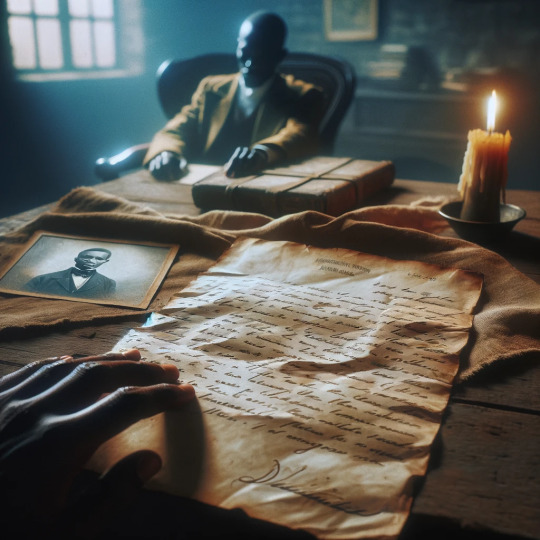
View On WordPress
0 notes
Text
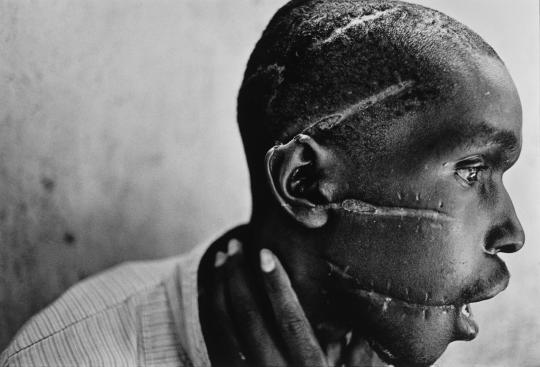
Mutilated By The Hutu 'Interahamwe'
World Press Photo of the Year, prize singles
1994
Commissioned by: Magnum Photos for Time
Photo Credit: James Nachtwey
1 note
·
View note
Text
‘They Stopped Seeing Us As Human Beings’: How War Criminal Europe Provoked A Savage Modern Genocide In The Heart of Africa
Thirty Years Later, The Rwandan Genocide Reminds Africa That It Needs African Solutions To African Problems
— March 7, 2024 | RT
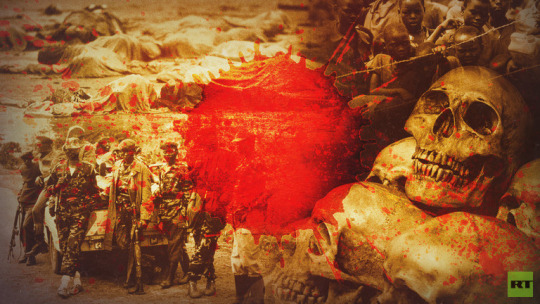
© RT/RT
“Our neighbors moved away from us, and we found ourselves isolated. They called us snakes. They stopped seeing us as human beings. Only a handful of neighbors came to drink at the bar I ran, the biggest bar in the area,” Dafrosa, a survivor of the 1994 genocide, recalls. “Markets and shops appeared where we were forbidden to shop. There they refused to sell us food; the cashiers said, ‘take your money somewhere else.’ From 1990 to 1994, politics began to divide people more and more. Segregation became commonplace. At first, there was no hostility in our church, but in other churches, the parishioners were divided and even refused to give communion to the Tutsis.”
The horrific events of April 1994 put an end to the illusion that the end of the Cold War and the ‘democratization’ of Africa would lead to years of peace and prosperity.
RT recalls how the bloody genocide began in Rwanda and whether it was possible to avoid.
How It Started
On April 6, 1994, two surface-to-air missiles shot down a plane as it approached Kigali, the capital of Rwanda. Then-President of Rwanda Juvenal Habyarimana and President of Burundi Cyprien Ntaryamira, on their way from peace talks in Arusha, Tanzania, died in the plane crash, along with seven other passengers.
The military, headed by retired Chief of Staff Theoneste Bagosora convened an interim government and declared that the Rwandan Patriotic Front (RPF) headed by Paul Kagame had been responsible for the attack. By that time, the RPF had been engaged in an armed conflict with the government for many years, and advanced towards the capital from the side of Uganda.
On that tragic night, Bagosora at a meeting of the General Staff of the Army tried to negotiate a transfer of power to the military but faced opposition from Romeo Dallaire who led the United Nations Assistance Mission for Rwanda (UNAMIR) at that time.
First of all, the conspirators got rid of moderate politicians. Among the victims were Prime Minister Agathe Uvilinhiyimana, Chairman of the Constitutional Court Joseph Kavaruganda, as well as a number of ministers and leaders of opposition parties. Their assassination greatly undermined any resistance efforts. Bagosora’s call for ‘revenge’ was supported by commanders, local authorities, and political experts, and was broadcast on Radio Television Libre des Mille Collines (RTLM) and other media.
100 Days of Genocide
Mass killings began in Rwanda’s Gisenyi Province (considered a stronghold of the authorities) just a few hours after the plane crash. By the next day, they spread to six more provinces, including the capital. The Presidential Guard, gendarmerie, Interahamwe youth detachments (‘interahamwe’ translates from Kinyarwanda as ‘those who work/fight together’), and ordinary people grabbed machete blades and agricultural tools, and wiped out the ‘Tutsis’, identified through documents or pointed out by their neighbors.
The wave of deadly violence began to decline as the RPF seized new territories in the north and east of Rwanda. In May and June 1994, the genocide continued on the territory which was not controlled by the RPF, while most of the intended victims had already been killed, the officials tried to direct the violence into the fight against Kagame’s detachments.
The mass murder of unarmed people went on throughout the country for about three months, leading to the death of several hundred thousand people. Though estimates vary depending on the time frame and other criteria, according to the Government of Rwanda, the official death toll is 1,074,107. The international community and the UN contingent stationed in Rwanda could not agree on any effective measures and merely watched the tragedy unfold.
During the about 100-day genocide, the RPF’s struggle with Habyarimana’s regime continued, and so did the conflict within the ruling regime – between supporters of the “moderate” course and the “radicals” led by Bagosora, who rejected any negotiations with the RPF. The genocide was eventually stopped, RPF troops led by Kagame entered the capital. From then and for many years, the RPF established itself as the undisputed ruling party in Rwanda, and the key partner for any external player in the region.
In the aftermath of the tragic events of 1994, Rwanda was devastated, its GDP plunged dramatically, and the political landscape in the African Great Lakes region changed completely.
The genocide was not initially planned as a full-scale elimination of all Tutsis, but as a political cleansing of the actual or potential opponents of the regime. However, this got out of control promptly and dramatically.
The Role of War Criminal France
It is a widely reported that France maintained close relations with the Rwandan officials, responsible for the genocide, right up to its culmination. Many Rwandans even believe that, in the summer of 1994, a limited contingent of French troops was sent to the country in order to help France’s close allies among the government officials to escape (Opération Turquoise).
Having come to power, Paul Kagame reduced the influence of France in his country to a minimum. On the official level, Rwanda abandoned the use of the French language and switched to English. It also joined the Commonwealth of Nations headed by Britain. In its first years, Kagame’s government received major support from the US, but later, driven by both historical and economic reasons, Rwanda formed a multi-vector partnership system that was increasingly oriented towards the East – for example, China and the UAE.

Rwanda's new elected Hutu President Pasteur Bizimungu (L) and his vice President Paul Kagame, the Tutsi-led RPF (Rwandan Patriotic Front) commander (R), share a joke in Kigali on July 19, 1994. © Alexander Joe/AFP
Where The ‘Tutsis’ and ‘Hutus’ Came From
It is often claimed that the ‘Tutsis’ and ‘Hutus’ are ethnic groups. This is not at all the case, since the differences between these imposed and outdated categories are rather social. The Tutsis and Hutus, — at the time these categories were in use, — spoke the same language and inhabited the same territory. They were historically part of one society and closely interacted with each other.
In modern-day Rwanda, division into ‘Tutsis’ and ‘Hutus’ is wisely abandoned and forbidden – all residents are Rwandans, and the descendants of the former Hutus and Tutsis get along very well. But this does not mean that these categories could not be reinstated in the future, should someone want to start another conflict.
Binary oppositions were always an important factor in the development of European culture. But in traditional African societies, hybrid identity was much more widespread – a person is often identified with several social and cultural groups, and the social structure allowed people to ‘switch’ their social identity multiple times in the course of life.
The ‘Tutsis’ and ‘Hutus’ became known as a result of complex overlapping processes, including migration, assimilation, and the division of labor in society. The ‘Tutsis’ owned cattle, and generally had bigger incomes and more weapons. The ‘Hutus’ people worked the land. In pre-colonial Rwandan society, the ‘Tutsis’ represented the traditional hereditary aristocracy. Both groups spoke the same language, their traditions and customs were part of a single culture. The cultural boundaries were often blurred, and this served as an antidote to conflicts.
For example, a member of the ‘Tutsi’ community could become a ‘Hutu’, and vice versa. Some people weren’t part of either group, or considered themselves members of both groups. In European terms, they were one nation, but represented different social groups.
However, German and later Belgian colonialists needed a way to effectively manage and control the population of Ruanda-Urundi (the colonial territory that preceded modern Rwanda and Burundi), particularly since the Europeans were few in number. Searching for a model of colonial governance, they resorted to racial theoriespopular in Europe at the time (and not just in Germany). Based on these groundless theories, the taller ‘Tutsis’, who allegedly came from the north, were innately superior to the thickset ‘Hutus’.
The genocide was not an accident nor a sudden, unforeseen event. It was a deliberate terror campaign directed against the assumed supporters of the RPF. By April 1994, this campaign had reached its apogee and resulted in deliberately organized mass killings of unarmed people.
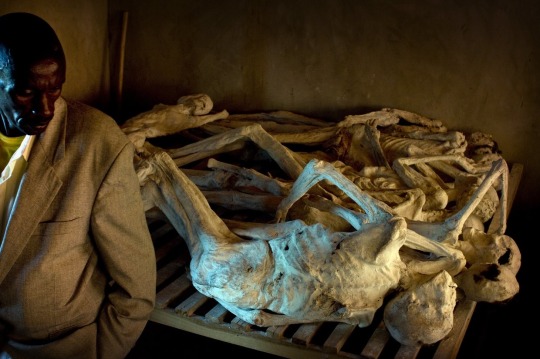
Bodies dug out from mass graves laid on a table in the Murambi memorial center in the south of Rwanda, April 19, 2008 in Murambi, Rwanda. © Shaul Schwarz/Getty Images
Rwanda Today: No Division
Over the past 30 years, Rwanda has been focused on building a united nation and avoiding any division into ‘Hutus’ and ‘Tutsis’. Progress in this respect is evident – the country has risen from the ashes, ensured sustainable economic growth, and turned into a regional stronghold of stability and security.
However, the opposition between the ‘Hutus’ and ‘Tutsis’ persists around. In Burundi, the percentage of Hutus and Tutsis in leadership positions is fixed at legislative level. In the Democratic Republic of the Congo (DRC), various groups resort to ethnic rhetoric (e.g. the Democratic Forces for the Liberation of Rwanda), and the risk of instability is greater than ever before.
Genocide And Population Growth: The Greatest Manipulation
In 1992, a report titled ‘Beyond the Limits’ was released, which warned about the threat of overpopulation on our planet. The report was published by the Club of Rome – one of the most influential behind-the-scenes non-profit organizations, notorious for its struggle with overpopulation. From an informational and ideological point of view, the report has strongly influenced how conflicts in Africa (including those in Rwanda) are viewed by the world.
The massive, months-long massacre, in the course of which ordinary people killed their unarmed neighbors practically with their bare hands, seemed to illustrate the horror into which the planet could plunge as a result of overpopulation and a lack of land, resources, and food. Several authoritative articles and monographs published in Europe and the US convinced the world that the tragedy in Rwanda had happened precisely because of overpopulation.
From this, an obvious conclusion was drawn that birth rates in the Global South – from Latin America to China – must be limited in order to avoid the repetition of the Rwanda scenario in countries like Nigeria or China. In reality, the Club of Rome and certain Western elites came to this conclusion in the interests of preserving their global supremacy and preventing the transfer of power to the world majority in the East and South. After all, the rise of the West to power and colonial expansion would have been impossible without the ‘demographic explosion’ that had once happened in Europe.
The myth about the overpopulation of Earth, including the ‘population trap’ and the food-shortage trap that humanity can fall into, is among the biggest information manipulations of the late 20th century. It has been based on a considerable number of ‘expert’ reports and scientific papers, publications, and discussions. However, by the second decade of the 21st century, it became clear that reality was a lot more complicated, and demographic growth in countries such as China, India, Ethiopia, and Nigeria actually ensured the development of infrastructure, agriculture, and allowed these countries to eliminate hunger. Today, all this is obvious, but in 1994, the genocide in Rwanda seemingly proved the opposite: that global overpopulation leads to catastrophes.

Pacifique Rutaganda, the guide of the Ntarama Genocide memorial where 5000 people were killed in the 94 Genocide, talks to an AFP reporter 26 May 2003. © Marco Longari/AFP
Thirty years have passed since the Rwanda genocide. Following a significant population decrease – from seven million people in the late 1980s to five million by the end of 1994 – by now, the population of Rwanda has surged to 14 million. Rwanda remains the most populous country in continental Africa, and is also one of the leaders in terms of economic growth. In terms of population density in Africa, Rwanda is surpassed only by Mauritius – which could well be the most prosperous country on the African continent.
Economic Growth Today
The supposed connection between population density, falling living standards, and food crises in Africa was merely an unsuccessful hypothesis. The expected growth of Africa’s population to three billion people in the coming decades is likely to solve the problem of hunger through market growth, infrastructure development, and agricultural production.
In Rwanda itself, economic growth is evident. In the past 30 years, crop production has increased more than sixfold, both due to increased agricultural productivity and because of new land included in agricultural turnover.
The length of paved roads has doubled to 1,200 km, exports increased from $100 million to $3 billion, and the capacity of power plants has increased sevenfold to 230 MWh. The growth of the Rwandan economy isn’t just a result of the balanced development of infrastructure, but is also due to the consistent development of the tertiary sector of the economy. In 2022, Rwanda’s tourism revenues amounted to $445 million. An important contribution in this regard is made by RwandAir, which offers 24 direct routes to 21 countries.
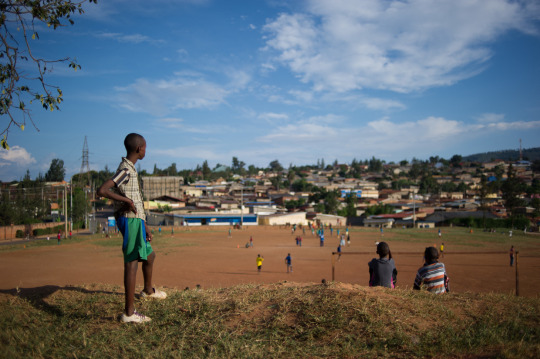
Rwandan youths watch a football game on March 16, 2014 at Gikondo suburb in the capital, Kigali. © Phil Moore/AFP
Why Did It Happen?
As for the causes of the genocide, we can now affirm that it was caused by external and situational factors. The electoral ‘democracy’imposed by France did not take into account the country’s traditions of governance and the class structure of Rwandan society.
The criminals who came to power united their supporters under the guise of protecting the interests of the ‘Hutus’, and incited people to violence, which was driven by induced class hatred. Meanwhile, external forces, including arms suppliers and smugglers, made money from the conflict. It was also convenient for the West as a means to justify its agenda and maintain its leadership position. Nevertheless, France was badly affected by the Rwanda genocide. In fact, the demise of Francafrique and the crisis in relations between Paris and Africa that has reached its apogee today, dates back to 1994.
What’s Next: Regional Hubs, Polarless Policy, External Impact
It is common practice for countries (and not just in Africa) to move their capital cities inland, away from coastal areas. In Africa, the most successful example of this is Abuja in Nigeria, and Dodoma in Tanzania may be next. This step signifies a change in the country’s system of development, as it moves away from a semi-colonial structure – when the country’s life depends on trade with the outside world through one or two large ports – to self-sufficiency ensured by internal growth resources and intraregional cooperation.
The next step is the formation of regional integration hubs in the inland parts of Africa, which would serve the needs of the entire continent. Such hubs are very important for the continent’s future. Rwanda is already turning into a remote communications and logistics center for Africa, and a distribution hub for the entire African Great Lakes region.
The construction of a new airport in southern Rwanda in partnership with Qatar Airways, and the construction of the Kigali dry port with DP World – a Dubai-based infrastructure and logistics company – can turn Kigali into an important transport hub and business center. However, the volume of foreign-exchange earnings is still insufficient to ensure the country’s continuous and rapid growth, and this remains a problem.
However, the part of the economy related to the processing and re-export of minerals from the DRC, as well as the supply of necessary goods (e.g. energy, food, medicines, and equipment) to the Eastern Congo market may ensure long-term growth, considering the growing global demand for Congolese metals. In order for this to happen, Rwanda needs to preserve a porous border with the DRC and expand its economic and political influence in North and South Kivu provinces. Peace – or at least keeping the conflicts in this part of Africa under control – is also an important prerequisite.
Among other things, Rwanda remains a positive example of a multi-vector and polarless policy characteristic of Africa. Qatar and the UAE are now forced to compete for Kigali’s attention. Even France, despite the painful history of relations between the two countries, remains among Kigali’s partners. Rwanda also maintains smooth, friendly political relations with the US, China, and Russia.
If it were not for external pressure on the DRC and Western attempts to limit China’s influence in Africa, the neighboring countries would certainly come to an agreement. Objectively, the DRC is interested in economic growth and development in its eastern regions, which would be impossible without Rwanda’s involvement. However, in recent years the conflict between Kinshasa and Kigali has escalated, acquiring sinister features which bring to mind the situation 30 years ago.
Statements by Western governments, which take an increasingly pro-Congolese stance, make the authorities in Rwanda nervous and contribute to the escalation. Nevertheless, for both Kinshasa and Kigali, it is more profitable to keep Goma (a city in the eastern region of the Congo) as a trading hub and logistics center, rather than turn it into a site of bloody battles. The tragic story of the Rwandan genocide demonstrates that the less external forces meddle in the region’s affairs, the greater its chance of living in peace and focus on development.
In July 2024, Rwanda will hold presidential elections. If the current president, Paul Kagame, is to be re-elected for another seven-year term, he will have to once again prove the effectiveness of the country’s post-1994 management model.
— By Andrey Maslov and Angelina Pshenichnikova, Center for African Studies at the Higher School of Economics, Moscow. The authors thank Daniil Makukhin and Vsevolod Sviridov from HSE for their help in preparing the article
#Africa#Feature#War Criminal 🇪🇺#Moder Genocide#The Rwandan Genocide#African Solutions | African Problems#War Criminal France 🇫🇷#Tutsis’ and ‘Hutus’#Genocide | Population | Manipulation#Economic Growth
0 notes
Text
Masisi congolais dans des années 1885
Beaucoup d’encre, de salive et de sang coule dans le Masisi congolais depuis bien avant l’indépendance du Congo.
Nous avons posé à Copilot la question de savoir qui occupait le Masisi dans le Kivu congolais en 1885 ? Contrairement à ce que attend souvent dire, les tutsi y auraient été à cette époque déjà.
En 1885, le territoire de Masisi dans la région du Kivu congolais était habité par…
View On WordPress
0 notes
Text
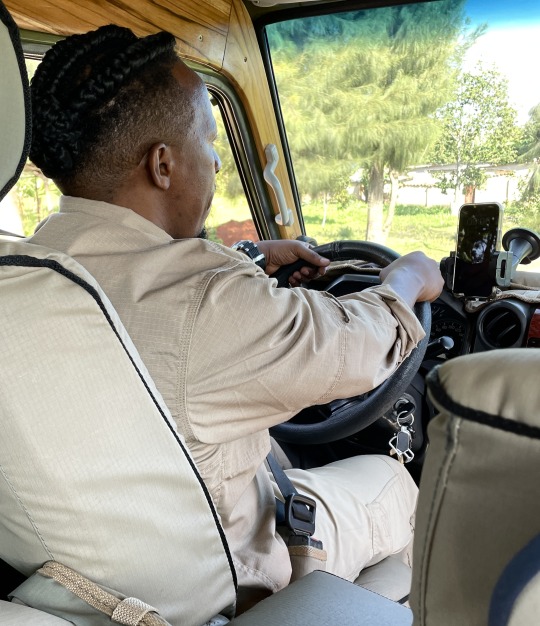
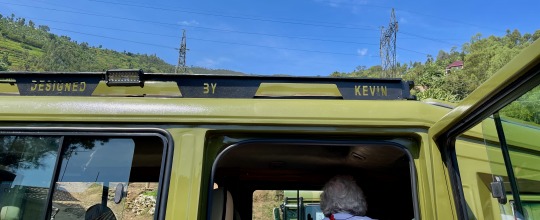
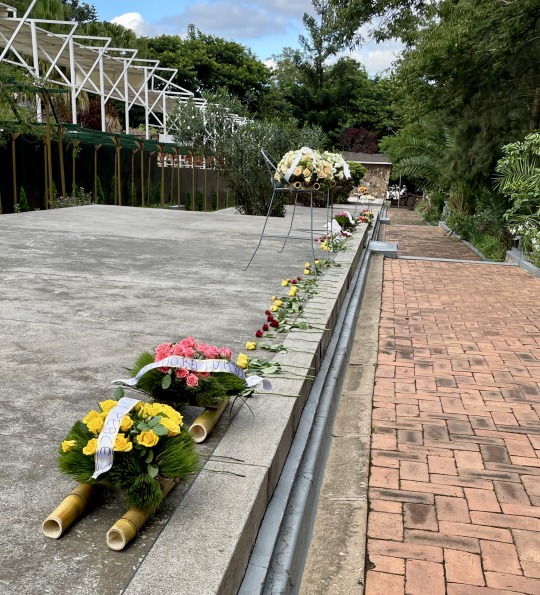
Our jeep driver Kevin told us we can share his story. During the slaughter of the Tutsi tribe by Hutu extremists, five members of Kevin's family were killed by a man they all knew. He almost killed Kevin too. Since then, Kevin has forgiven that man. With the help of a Tutsi leader who stopped the genocide and became president, Rwanda now has pride of place and respect for all, if you can imagine that. Outside of the Kigali Genocide Memorial are collective graves where 250,000 people are buried. Most of them are identified by plaques near the graves. Families and friends leave flowers in remembrance.
0 notes
Text
Alabama – Separation of Church and State – Violation – Invoking “God”
It seems we have a judicial member, a very senior member who seems to have not performed well in law school.
This Alabama Judge (Tom Parker) should be removed (finally) from the bench with his IVF ruling disqualified. Why you ask?
So glad you asked. It is because, as far as many of the rest of us know, there is “supposed” to be an EXPLICITLY clear delineation between adding personal religious…
View On WordPress
#alabama#black wall street#black wall street massacre#China#dragons#embryo#flat earth#genesis#god#holocaust#Hutu#illegal#indigenous native americans#invitro fertilization#ivf#judge#nanjing#nanking#native americans#pandemic#religion#Reproductive rights#Rwanda#separation of churn and state#tom parker#tulsa Oklahoma#Tutsi#Uyghur#uyghurs
0 notes